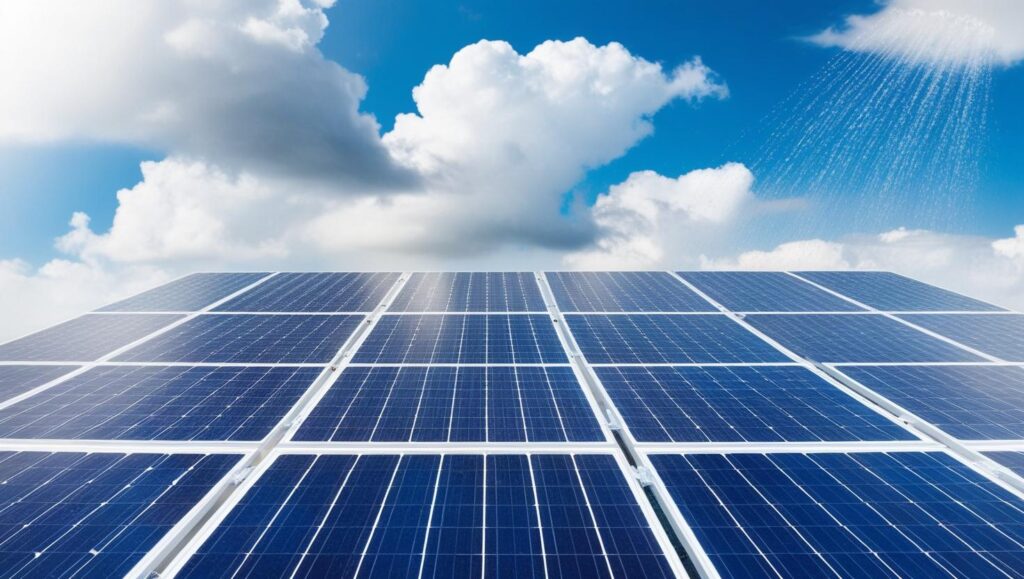



Climate Factors Impact significantly on the performance of solar panels across various conditions, including heat, cold, and cloudy days. Understanding how these factors influence solar technology is essential for optimizing energy production and selecting the right components for different environments. This article explores how temperature coefficients and low-light performance affect solar components under diverse climate conditions
Temperature Coefficients: A Key to Performance
Solar panels operate based on photovoltaic technology, which converts sunlight into electricity. However, temperature plays a crucial role in this process. Each solar panel has a temperature coefficient, which measures how much the panel’s output decreases for each degree Celsius increase in temperature above a specific baseline, usually around 25°C (77°F).
-
Heat Effects: In hot climates or during the summer, solar panels can experience significant drops in efficiency due to rising ambient temperatures. For instance, a solar panel with a temperature coefficient of -0.4% per degree Celsius will decrease its output by 0.4% for every degree above 25°C. In high temperatures, this can add up, affecting overall energy yield.
-
Cold Effects: Conversely, solar panels can perform better in colder conditions. As the temperature drops, the efficiency of solar cells typically increases, sometimes providing up to 5% more power output in cooler weather than in hotter weather, depending on the temperature coefficient of the specific panel.
Low-Light Performance
Another critical aspect of solar panel efficiency is low-light performance, which focuses on the panel’s ability to generate electricity during overcast conditions. Efficient solar panels can still harvest energy even in less-than-ideal lighting, making them more versatile for various climates.
-
Cloudy Days: On cloudy days, direct sunlight diminishes, but indirect sunlight and diffuse light still reach solar panels. High-quality panels designed to be effective in low-light situations are essential for maximizing energy generation when the sun isn’t shining brightly. Panels with better low-light performance will sustain energy production during overcast days, making them ideal for regions where sunny days are sporadic.
-
Angular Sensitivity: The angle at which sunlight hits the solar panels can also impact their efficiency. In overcast conditions, the angle of the panels can maximize exposure to diffused sunlight. Thus, adjustable mountings that accommodate seasonal changes can be beneficial.
Climate Factors Impact Solutions
Understanding how Climate Factors Impact solar panel performance can guide investments in solar energy systems tailored to local conditions. Here are recommendations for addressing climate challenges:
-
Panel Selection: Choose panels with favorable temperature coefficients for hot climates. Glassy panels with anti-reflective coatings can improve performance in high heat.
-
Installation Strategy: Optimize the angle of installation to enhance exposure to sunlight, particularly during low-light conditions. Adjustable mounts can help maintain ideal angles year-round.
-
Monitoring Systems: Integrate solar monitoring solutions to track performance. Such systems can provide real-time data on energy output, helping owners recognize performance trends related to varying weather conditions.
-
Regular Maintenance: Maintain panels regularly to prevent debris and dust buildup, which can reduce efficiency, particularly in dry, windy areas where dust can settle on panels.
Conclusion
Climate Factors Impact substantially on the functionality of solar components. By understanding how temperature and light conditions affect solar panel performance, stakeholders can make informed decisions for system design, component selection, and overall energy strategy. The advancements in solar technology continue to improve efficiency even under challenging conditions, making solar energy a viable option across diverse climatic regions.
Through ongoing innovation and careful planning, communities can harness the full potential of solar technology, paving the way for a sustainable energy future.
For more insights and information about solar energy and its benefits, visit Andromeda Energy.
Related Blogs
- Understanding Solar Panel Technology
- Maximizing Energy Storage Solutions
- The Role of Solar Energy in Sustainable Development
For Further Detail
https://www.renewableenergyworld.com/


Leave a Reply